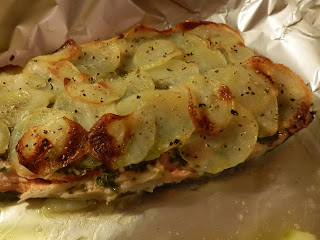I rarely buy biscuits. The long list of ingredients on the side of the packet is enough to put me off and most of them don't taste great either. I make an exception with shortbread - I love it, in all its forms and even the cheapest brands are fairly unadulterated, listing just flour, butter, sugar and salt.
Homemade biscuits however are a completely different proposition. They are a joy, both in taste and to make. There's something very therapeutic about rolling out the dough and then cutting it into pretty shapes, like the star biscuits here. I didn't intend them to be Christmas biscuits, it's just that stars are the only cutters I have with a matching small shape for the open centre. Looking at the photo, I realise that the shape, together with the raspberry red middle, makes them look very festive indeed. I'll certainly be baking these again nearer to Christmas.
This recipe comes from Pam Corbin writing in The Guardian but it is originally from the River Cottage Handbook: Cakes by Pam Corbin. It is similar to shortbread but with the addition of an egg yolk which makes the dough more pliable and the biscuits hold their shape better too.
As this month's letter is 'J' in the brilliant Alphabakes challenge by Caroline at Caroline Makes (this month's host) and Ros from TheMoreThanOccasionalBaker, I'm sending this as my entry. I always enjoy seeing what everyone comes up with for this imaginative challenge!

RECIPE (from River Cottage Handbook: Cakes by Pam Corbin) - Makes 6-7
175g plain flour
Pinch of sea salt
75g icing sugar
125g unsalted butter, cut into small pieces
1 egg yolk
1 tsp vanilla extract
150g raspberry jam (or whatever flavour you like)
2 large baking sheets, lined with baking parchment
6–7cm biscuit cutter
6–7cm biscuit cutter
2.5cm heart, square, round or animal biscuit cutter
In a small bowl, whisk the egg yolk and vanilla extract together. Make a well in the centre of the flour mix. Add the egg and vanilla mix and work together to form a soft, smooth dough. Seal the dough in a polythene bag and chill in the fridge for 25–30 minutes.
Preheat the oven to 170°C. Divide the dough into two equal portions. Place one portion between two pieces of lightly floured greaseproof paper and, using a rolling pin, roll the dough to approximately a 4mm thickness. Repeat with the second piece of dough. Remove the top paper
With the larger biscuit cutter, cut the dough into discs (make sure you have an even number). Using the smaller cutter, cut out and remove the centre of half the biscuit discs; the cut-out pieces can either be kneaded back into the remaining dough or baked just as they are.
Place all the discs on the baking sheets. Bake for 15–20 minutes until just firm and barely coloured.
Remove from the oven and place a teaspoonful of jam in the centre of each whole biscuit. Spread to 1.5cm from the edge. Place the cut-out rounds on top. Return to the oven and cook for a further 5–6 minutes by which time the biscuits will be evenly cooked and the jam sufficiently hot to stick the biscuits together.
Leave the biscuits to cool for 5 minutes before transferring to a wire cooling rack.






































